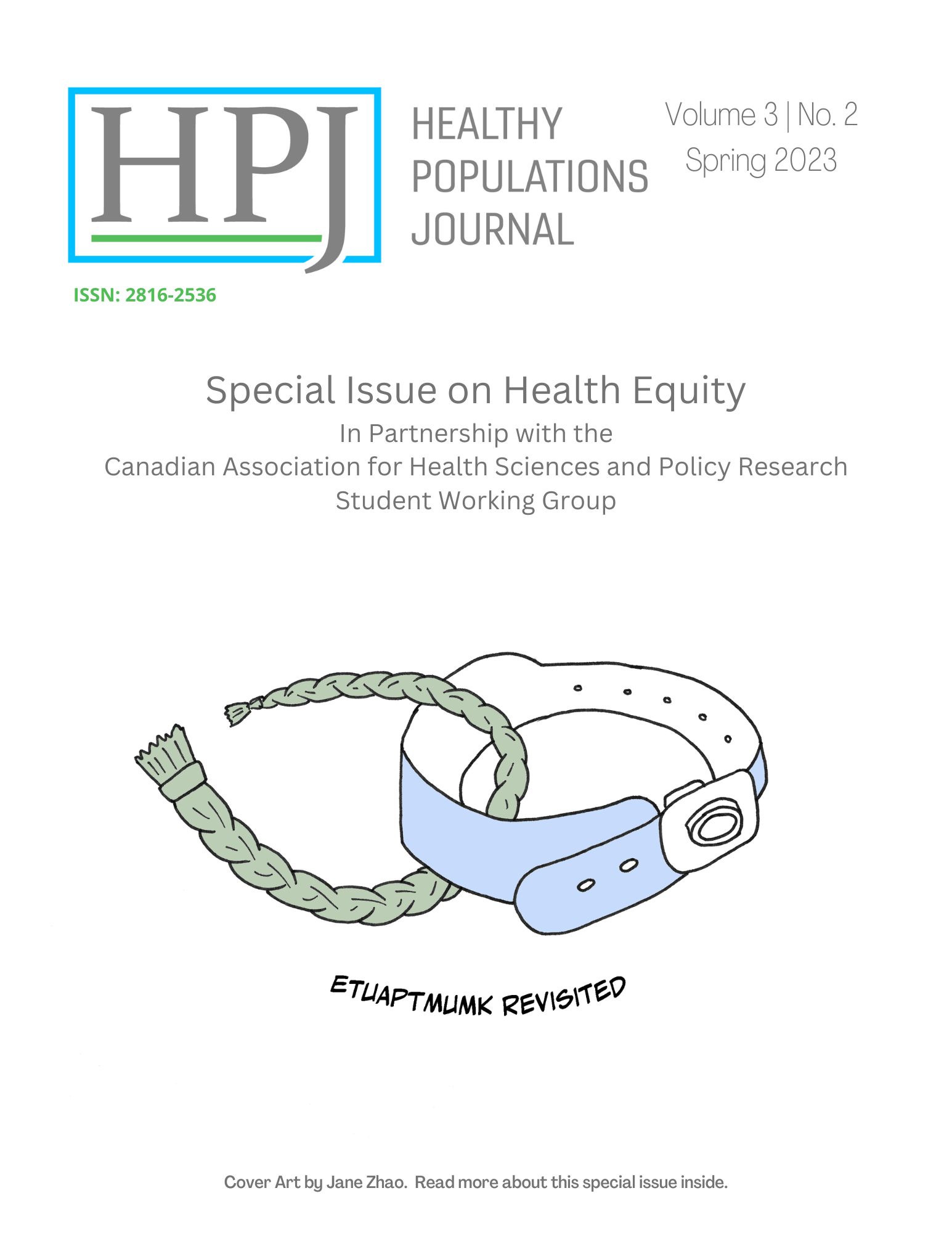Using Social Media to Better Understand Parents‘ Experiences Managing Teething Pain
DOI:
https://doi.org/10.15273/hpj.v3i2.11594Parole chiave:
primary tooth eruption, pain management, pediatric pain, qualitative, knowledge translation, social media, FacebookAbstract
Teething in infants is a natural process that is associated with a variety of signs and symptoms. Many teething pain management strategies exist, yet there is a lack of research investigating which strategies are used by parents and whether they are evidence based. Using an established social media initiative, this study sought to better understand parents‘ experiences managing teething pain and to determine which strategies are evidence based. Methods: Parents‘ experiences with managing teething pain were gathered through a Facebook post in partnership with researchers and a Canadian digital publisher, YummyMummyClub.ca. This Facebook post, part of a larger social media initiative called #ItDoesntHaveToHurt, asked the following question: “What do you do when you think your baby has teething pain?” Comments underwent descriptive thematic analysis to identify common management approaches. An evidence review of literature was undertaken to determine if the most frequently used pain management strategies reported by parents are supported by research. Results: The post received 163 comments. Analysis identified that the most frequently mentioned strategies were frozen/chilled objects, over-the-counter oral analgesics, frozen fruits/vegetables, oral anesthetic gels, and teething necklaces. The evidence review findings suggest a lack of research in the area of teething pain management. Professional dental associations recommend rubbing the gums with a clean finger or using chilled teething toys and over-the-counter analgesics as effective management strategies. Evidence indicates that oral anesthetic gels and teething necklaces are unsafe. Conclusion: Parents use a variety of teething pain management strategies for their infants, many of which are unsafe and not supported by evidence. What information is used by parents and how they select teething pain management strategies is an area that requires further research.
Riferimenti bibliografici
Abdulsatar, F., Taheri, S., & Miller, M. (2018). Use of unsafe teething remedies in a mid-size city: A survey. Pediatrics & Child Health, 23(Suppl 1), e54. https:// doi.org/10.1093/pch/pxy054.135
American Academy of Pediatric Dentistry. (2021). Perinatal and infant oral health care. The reference manual of pediatric dentistry (pp. 277–281). https://www.aapd.org/media/policies_guidelines/bp_perinataloralhealthcare.pdf
Braun, V., & Clarke, V. (2006). Using thematic analysis in psychology. Qualitative Research in Psychology, 3(2), 77–101. https://doi.org/10.1191/1478088706qp063oa
Canadian Dental Association. (n.d.). Dental development. Retrieved August 8, 2022, from http://www.cda-adc.ca/en/oral_health/cfyt/dental_care_children/development.asp
Canadian Institutes of Health Research. (2021, December 6). It doesn‘t have to hurt. Government of Canada. Retrieved August 8, 2022, from https://cihr-irsc.gc.ca/e/49821.html
Cox, C., Petrie, N., & Hurley, K. F. (2017). Infant strangulation from an amber teething necklace. Canadian Journal of Emergency Medicine, 19(5), 400–403. https://doi.org/10.1017/cem.2016.342
Frey, E., Bonfiglioli, C., Brunner, M., & Frawley, J. (2022). Parents‘ use of social media as a health information source for their children: A scoping review. Academic Pediatrics, 22(4), 526–539. https://doi.org/10.1016/j.acap.2021.12.006
Government of Canada. (2020, October 15). Public advisory: Benzocaine products should not be used in children under two years of age. Retrieved August 8, 2022, from https://healthycanadians. gc.ca/recall-alert-rappel-avis/hc-sc/2020/74129a-eng.php
Haznedaroglu, E., & Mentes, A. (2016). The Internet versus pediatricians as a source of infant teething information for parents in Turkey. Clinics, 71(8), 430–434. https://doi.org/10.6061 /clinics/2016(08)04
Holt, R. D. (2000). Symptoms associated with teething. Evidence-Based Dentistry, 2(3), Article 68. https://doi.org/10.1038/ sj.ebd.6400047
It Doesn‘t Have to Hurt. (n.d.). #ItDoesntHaveToHurt. Retrieved August 8, 2022, from https://itdoesnthavetohurt.ca/campaigns/itdoesnthavetohurt/
Macknin, M. L., Piedmonte, M., Jacobs, J., & Skibinski, C. (2000). Symptoms associated with infant teething: A prospective study. Pediatrics, 105(4), 747–752. https://doi.org/10.1542 /peds.105.4.747
Markman, L. (2009). Teething: Facts and fiction. Pediatrics in Review, 30(8), e59–e64. https://doi.org/10.1542/pir.30-8-e59
McIntyre, G. T., & McIntyre, G. M. (2002). Teething troubles? British Dental Journal, 192(5), 251–255. https://doi.org/10.1038/sj.bdj.4801349
Meer, Z., & Meer, A. (2011). Teething trouble and its management in children. International Journal of Dental Clinics, 3(2), 75–77.
Melnyk, B. M., & Fineout-Overholt, E. (2005). Evidence-based practice in nursing and healthcare: A guide to best practice. Lippincott Williams & Wilkins.
Memarpour, M., Soltanimehr, E., & Eskandarian, T. (2015). Signs and symptoms associated with primary tooth eruption: A clinical trial of nonpharmacological remedies. BMC Oral Health, 15, Article 88. https://doi.org/10.1186/s12903-015-0070-2
MouthHealthy. (n.d.). Teething. American Dental Association. Retrieved September 1, 2022, from https://www.mouthhealthy.org/en/az-topics/t/teething
Ramos-Jorge, J., Pordeus, I., A., Ramos-Jorge, M., & Paiva, S. M. (2011). Prospective longitudinal study of signs and symptoms associated with primary tooth eruption. Pediatrics, 128(3), 471– 476. https://doi.org/10.1542 /peds.2010-2697
Tougas, M. E., Chambers, C. T., Corkum, P., Robillard, J. M., Gruzd, A., Howard, V., Kampen, A., Boerner, K. E., & Hundert, A. S. (2018). Social media content about children‘s pain and sleep: Content and network analysis. JMIR Pediatrics and Parenting, 1(2), Article e11193. https://doi.org/10.2196/11193
U.S. Food and Drug Administration. (2011, April 7). FDA drug safety communication: Reports of a rare, but serious and potentially fatal adverse effect with the use of over-the-counter (OTC) benzocaine gels and liquids applied to the gums or mouth. https://www.fda.gov/drugs/drug-safety-and-availability/fda-drug-safety-communication-reports-rare-serious-and-potentially-fatal-adverse-effect-use-over
U.S. Food and Drug Administration. (2014, June 26). FDA drug safety communication: FDA recommends not using lidocaine to treat teething pain and requires new Boxed Warning. https://www.fda.gov/ drugs/drug-safety-and-availability/fda-drug-safety-communication-fda-recommends-not-using-lidocaine-treat-teething-pain-and-requires
U.S. Food and Drug Administration. (2018, May 23). Risk of serious and potentially fatal blood disorder prompts FDA action on oral over-the-counter benzocaine products used for teething and mouth pain and prescription local anesthetics. https://www.fda.gov/drugs/drug-safety-and-availability/risk-serious-and-potentially-fatal-blood-disorder-prompts-fda-action-oral-over-counter-benzocaine
Wake, M., Hesketh, K., & Lucas, J. (2000). Teething and tooth eruption in infants: A cohort study. Pediatrics, 106(6), 1374–1379. https://doi.org/10.1542 /peds.106.6.1374
Yummy Mummy Club [YMC]. (2016, May 2). We‘re giving away another $75 Visa gift card! What‘s one rite of passage every single baby goes through? Teething pain. Facebook.https://www.facebook.com/YMCBuzz/photos/a.283477661054/10154289020806055/?type=3


